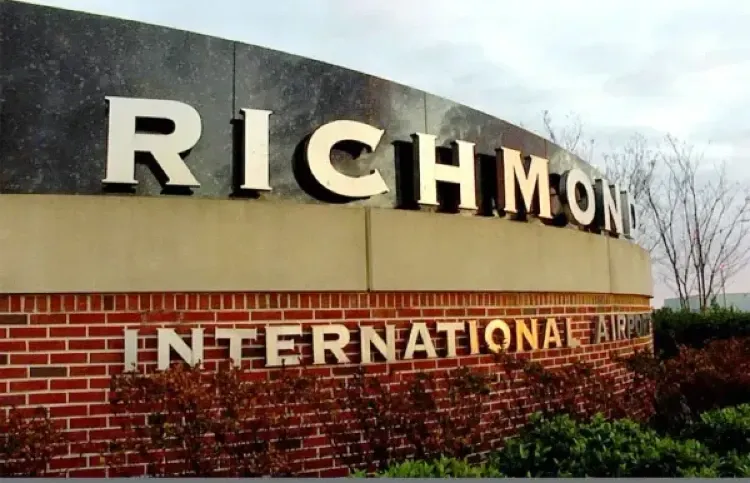Across Henrico, SNAP cuts create uncertainty, increase hunger

Table of Contents
Last Wednesday, a steady line of at least 25 people – Black, white, Afghan, Hispanic, Asian, young and old – stood in the parking lot outside ICNA Relief Food Pantry at 3009 Lafayette Avenue in Henrico's Lakeside community, shielded from the sun under the green tents, each waiting to pick up a box and bag of food being distributed.
ICNA stands for Islamic Circle of North America, and the volunteers inside, the crowd outside and the food provided reflected the organization’s faith-based focus. ICNA’s food distribution services are open to all, as one of 11 food pantries in Henrico County listed on Feed More’s agency locator webpage.
The Wednesday food distribution was a lifeline for Jodi, a Henrico resident who came to the pantry with her adult daughter. Jodi, who only wanted to use her first name, said she usually receives just $114 a month in federal Supplemental Nutrition Assistance Program (SNAP) funds. The funds for food are essential to her survival, she said, because her employer can't schedule her to work enough hours to earn sufficient amount to support all of her needed expenses. And, as a newcomer to the Richmond region, she doesn't have any family support.
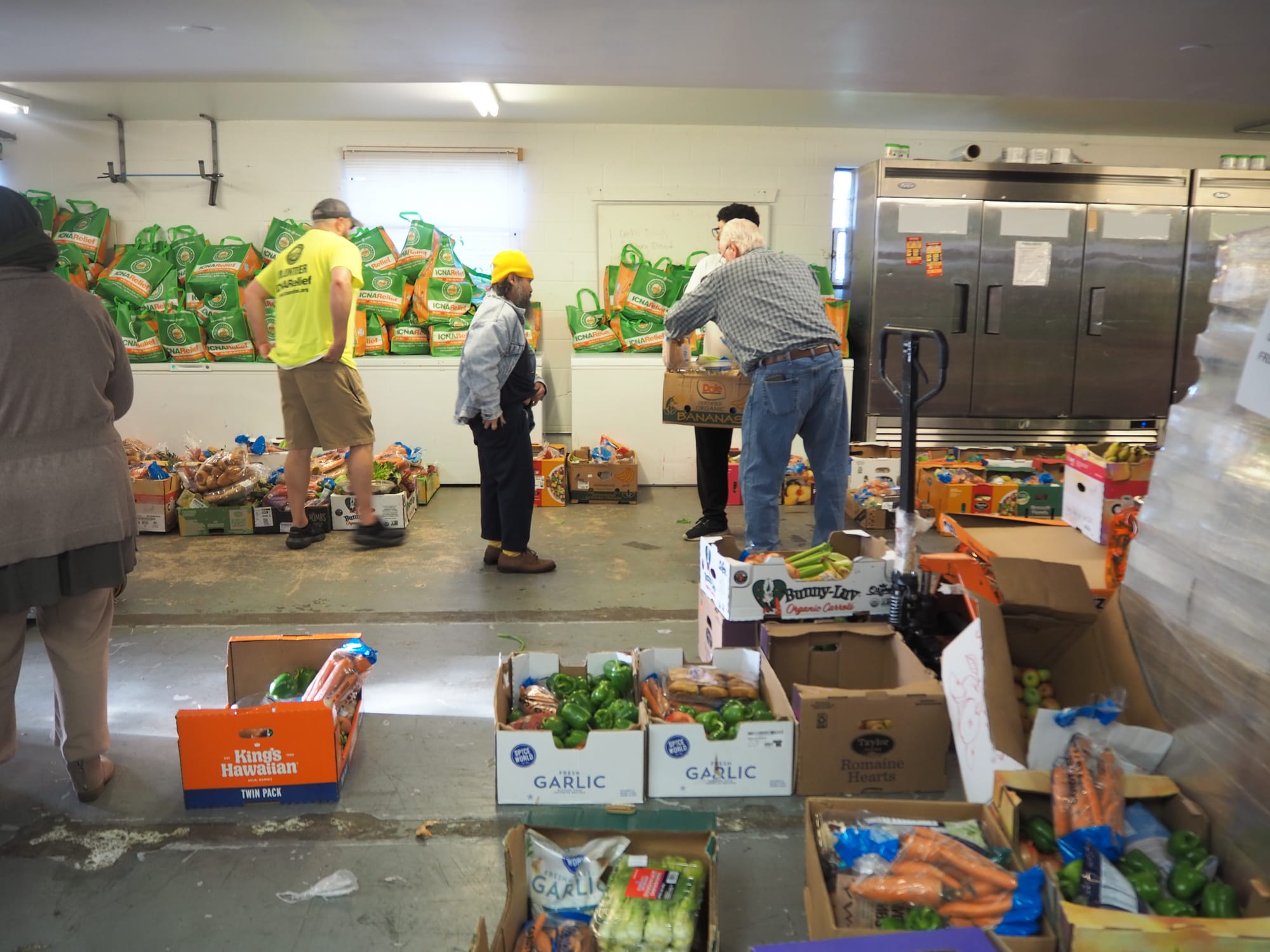
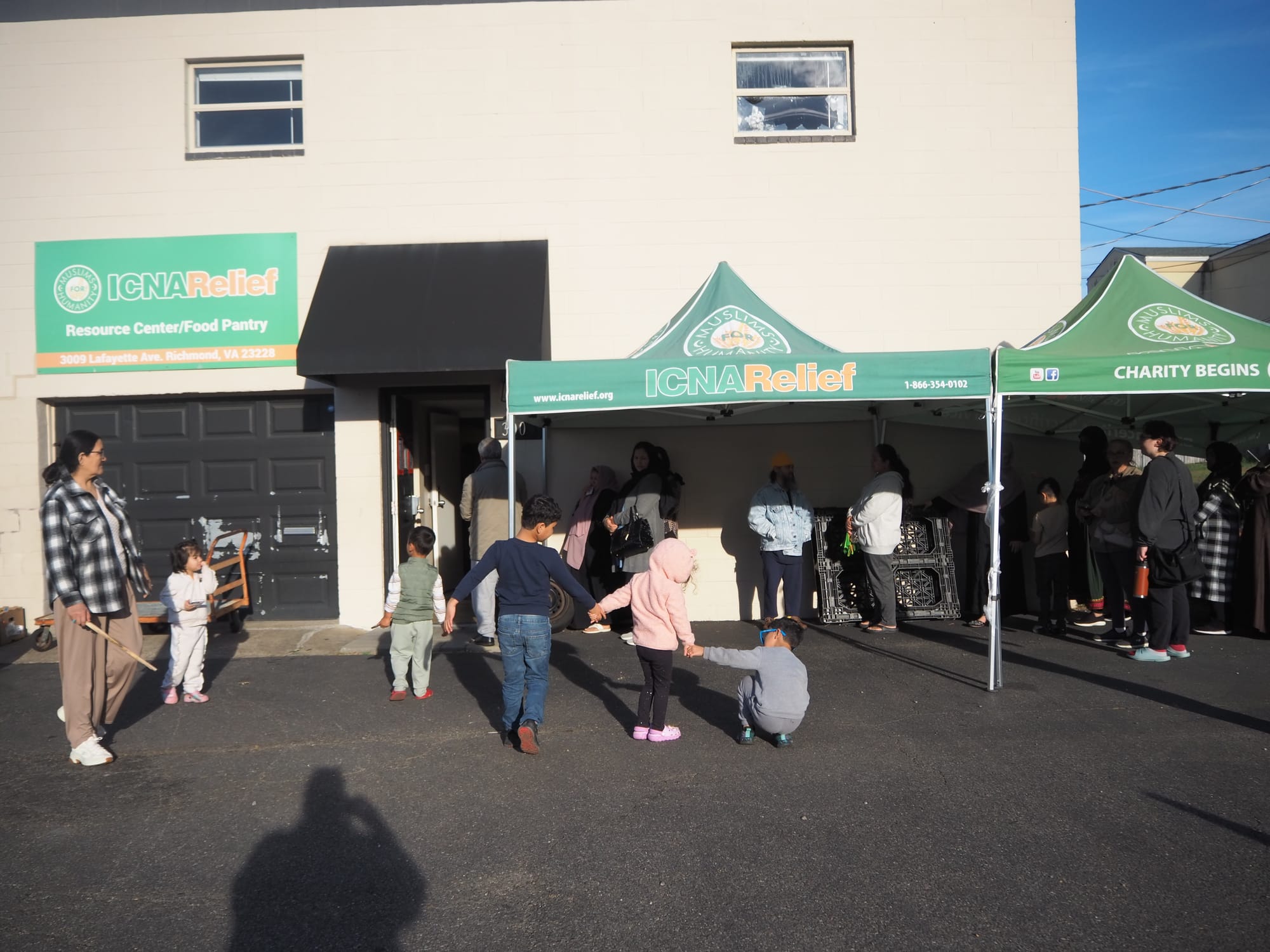
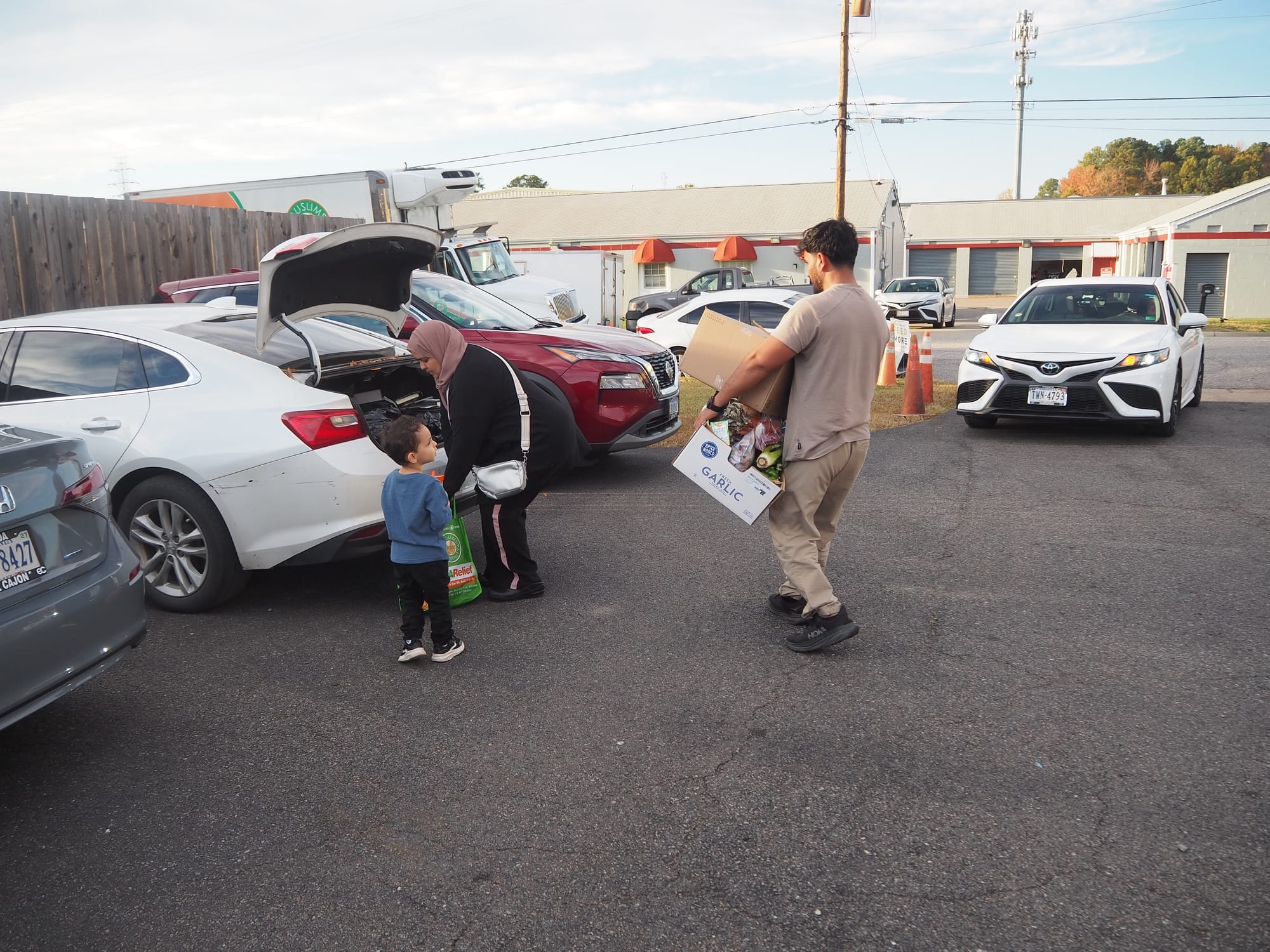
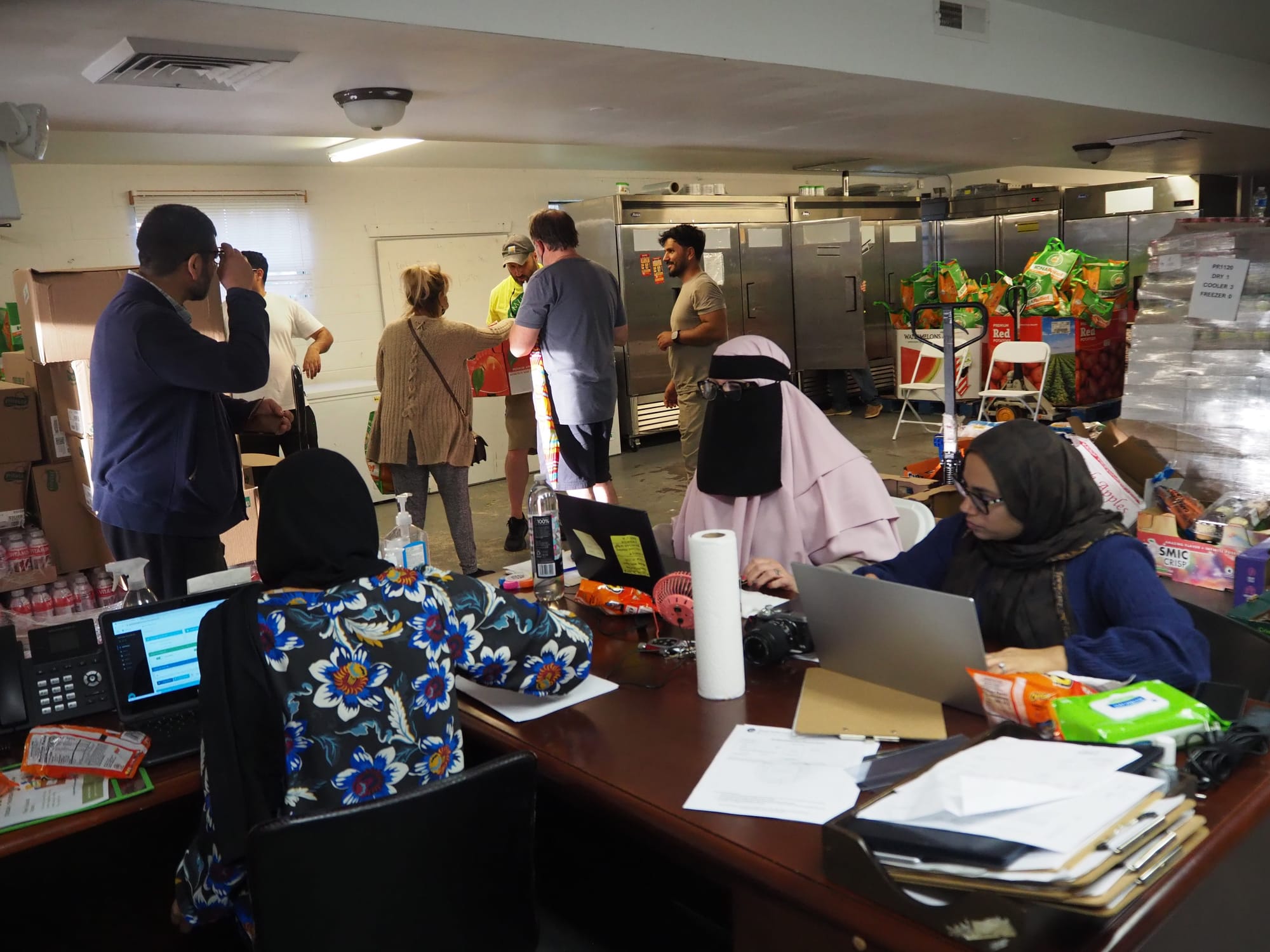
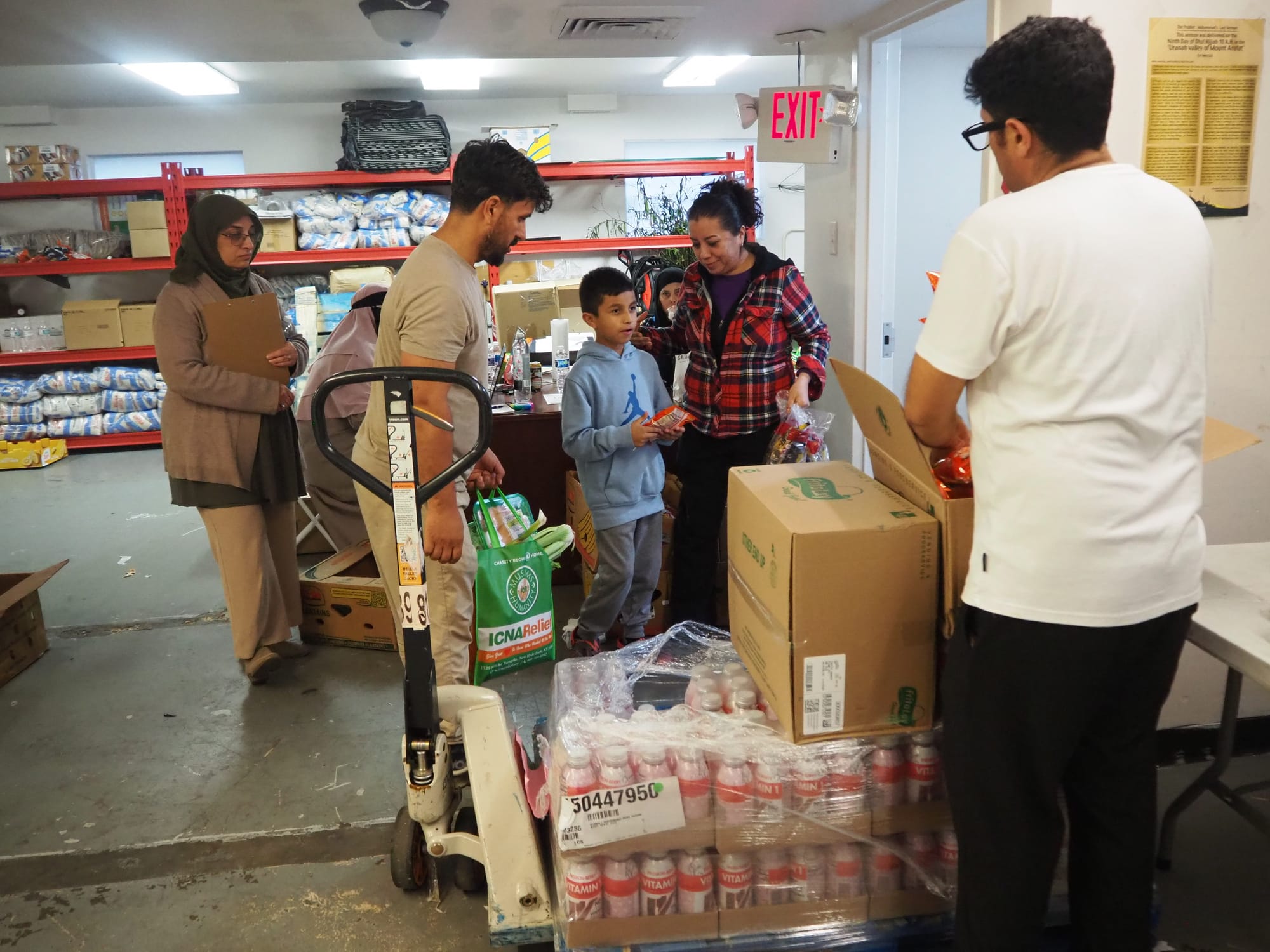
Staff and volunteers at the ICNA Relief food pantry distribute crucial sustenance to a wide variety of people during an event Nov. 5, 2025. (Dina Weinstein/Henrico Citizen)
This month the federal SNAP money had not yet appeared on her card. And she wasn’t sure it would, since the program had been cut because of the federal government shutdown.
“It’s tough and I’m scared,” Jodi said as she loaded a box and bag of food from the ICNA into her car. She said she would share some of the food with a neighbor who also was in need.
The ICNA food pantry offered more fresh fruits and vegetables than another pantry she had visited, where distributed items were expired, she said.
“The federal government has a responsibility to feed its citizens, otherwise what good are they? What good are my taxes?” said Julia, Jodi’s adult daughter, referring to the SNAP food funds shortage situation her mother and 42 million other Americans are facing.
In Henrico County, 37,000 people receive SNAP. Like Jody, most of those recipients work.

Refugees cut from SNAP
Ernest, a father of two who lives in Western Henrico also stood in the line outside ICNA.
“I’m here because food is expensive and because of the rising cost of electricity,” he said. “I shouldn’t have to be here as a middle-class American.”
For the five women originally from Guatemala who stood in line, the pantry provided help augmenting the meager salaries they garner working as hotel housekeepers while paying the significant rent and utility bills they face. The bunches of plantains they received would be turned into a tasty dish for their hungry children.
But for the many Afghan men, women and children who lined up outside, the meat in the food pantry’s freezer that was offered was refused, as it was not Halal, a Muslim religious butchering requirement. Staffers said they were working to securing Halal meat to serve the groups’ specific dietary requirements.
The help was crucial for many of the refugees and asylees, who just a few years ago were welcomed to the U.S. as allies. Refugees and asylees were removed from SNAP benefits this month because a new federal law requires them to have a green card for at least five years to be eligible.
The team inside the food pantry skews Muslim, but not all the helpers are. Three women staffing the front desk and registering visitors wore different styles of hijabs. Male volunteers and staff packed boxes with rice, beans, pasta and other food that appeals to the recipients’ cultural backgrounds. All visitors register in the pantry’s system that is linked to Feed More’s central system to gather data about food needs for people in Henrico and beyond.
Georgina, a woman who works at a sign-making company down the street from the food pantry, emerged beaming with a box and a bag filled with food.
“It’s a little bit of something, so I’m happy,” she exclaimed with a smile. “A little bit is better than nothing.”
As the line outside dwindled and all walked away with a box and bag of food, the staff inside tallied their count: 81 families who were already in the system and 17 new families that week, making a 21% increase.
“We notice there are more people every week,” ICNA staffer Kadija Scott said. “We put value in humanizing the experience for the recipients. You never know when disaster is going to strike. No one is immune.”
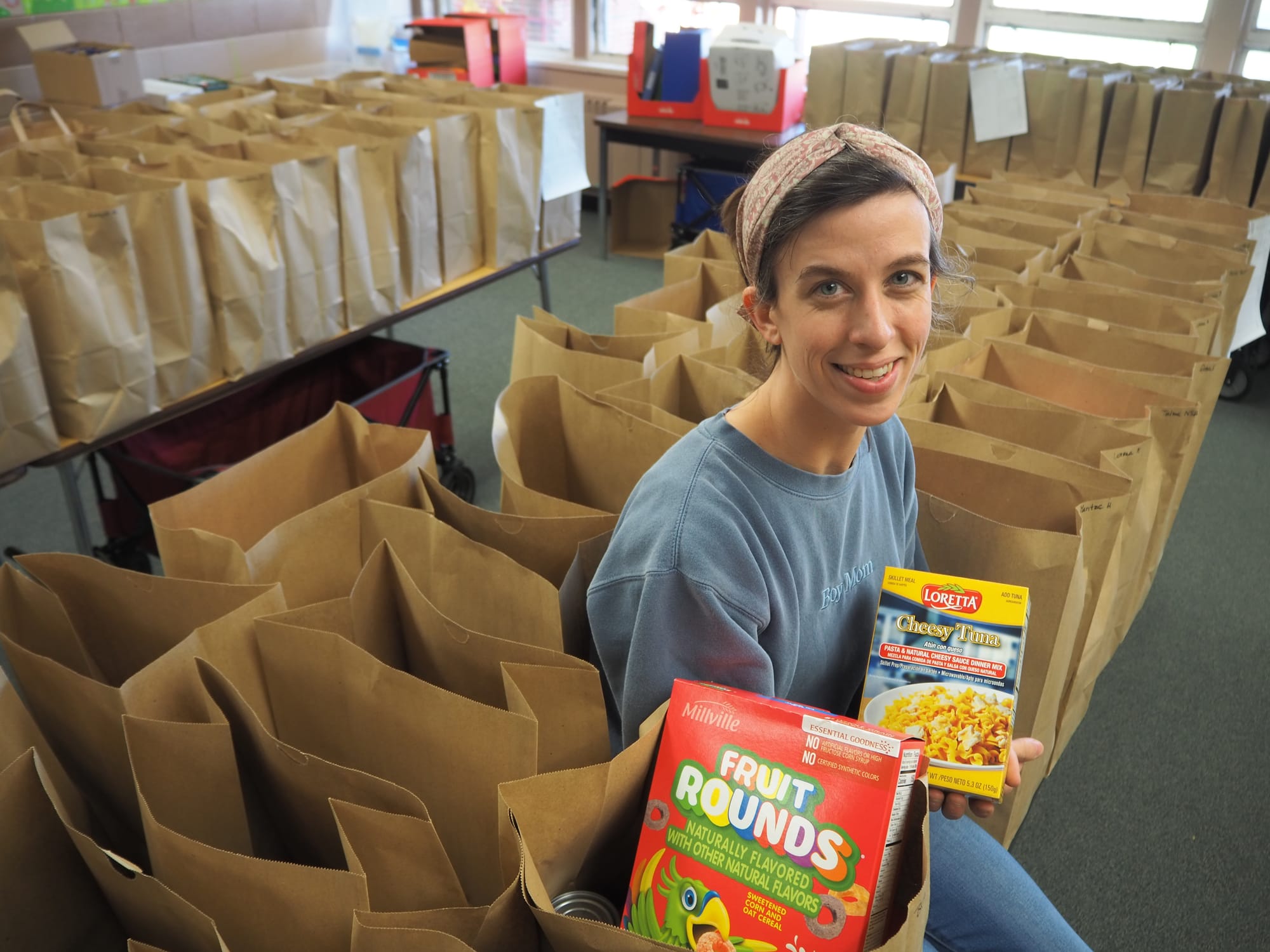
A growing need
This weekend, some welcome news emerged: the U.S. Senate voted 60-40 to support a compromise that is expected to end the longest federal government shutdown after nearly six weeks. Virginia's two U.S. Senators (both Democrats) were split on the measure, with Senator Tim Kaine voting for it and Senator Mark Warner voting against it.
But as the shutdown continues, food pantries from one side of Henrico County to the other have witnessed an increased number of people visiting or calling, in desperate need of food.
During visits by the Henrico Citizen to a variety of food pantries and food banks throughout Henrico during a week, staffers, volunteers and recipients shared their efforts and needs as the community and organizations activate, scrambling to serve those in need as crucial funds are withheld portending a looming hunger crisis for the most vulnerable.
ICNA is just one of the 31 partner food pantries in Henrico that are a part of Feed More’s distribution network. The Henrico sites comprise less than 10% of the Central Virginia Food Bank’s 380 distribution partners throughout the region. (Those totals do not account for the impact made by Feed More’s Meals on Wheels program, which delivers food to elderly recipients).
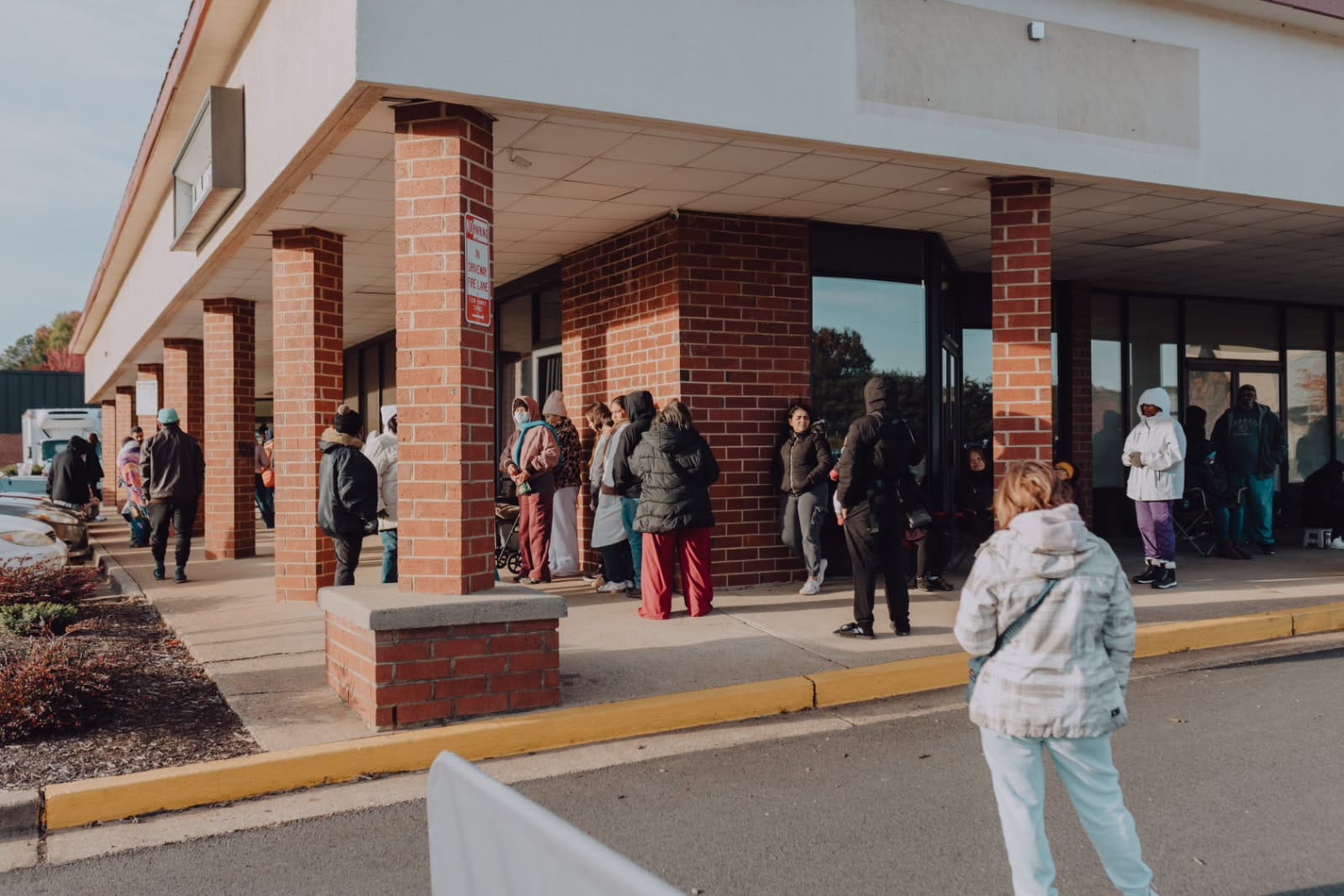

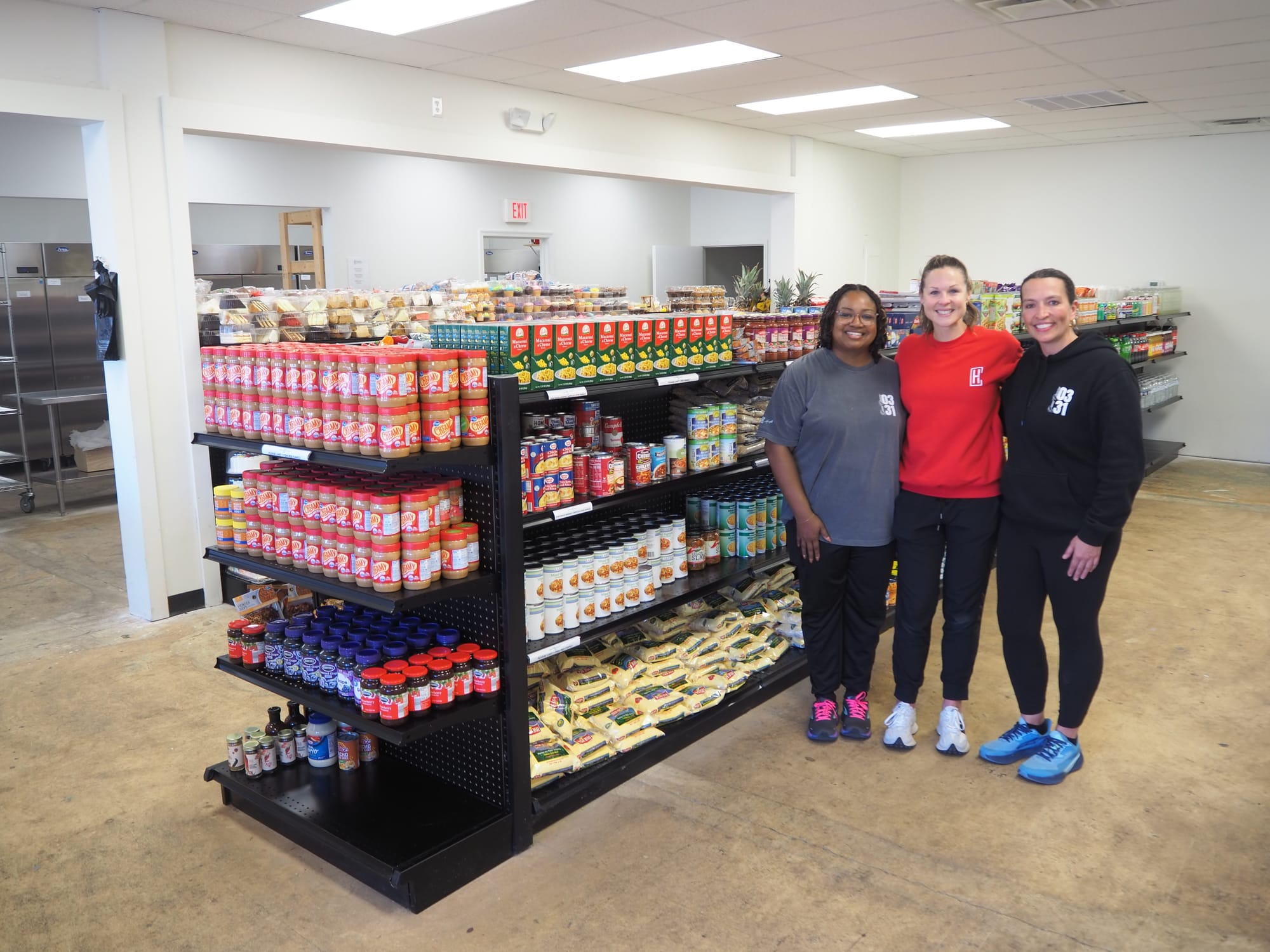
(Left and center) People from across Henrico County and beyond, line up on a recent Saturday morning to chose items at the Heights Church Grocery. (Photos: courtesy of Heights Church) And in the photo on the right, Heights Grocery staffers stand in the facility on a Friday afternoon after dozens of volunteers have unpacked and stocked up the "store-style" food pantry that includes refrigerated, bakery and meat products. From left: Octavia Marsh, local missions director; Brittney Mullins, director of missions; and Gemma Brooks, coordinator of stocking and collections. (Dina Weinstein/Henrico Citizen)
Being in that partner network means the food pantries can receive goods and purchase items from Feed More’s distribution warehouse on Villa Park Drive in Northern Henrico in bulk – and at prices that are dramatically lower than a typical retail supermarket.
But items from Feed More do not make up the entirety of the items stocked at these pantries, which all operate at different times and days. The federal government shutdown, federal workers being furloughed, and the cost of food and goods going up, pose an increased challenge.
Because of the Trump administration’s lack of clarity around releasing emergency SNAP funds, Feed More officials continued to operate in “an uncertain position” according to Rodrigo Aririaza, Feed More public relations and social content coordinator. As this article went to press the SNAP funds became available and then were rescinded.
Feed More Chief Development Officer Aaron McClung estimated that the cost to keep Henrico County SNAP recipients fed each month will total $6.5 million. But he said the challenge with quantifying the number of people on SNAP is that it's a fluid program.
That’s just one of the challenges. This year, the number of people looking for help through Feed More’s programs and partners is up about 14%, while the organization has seen a decrease in supply of food items and funds donated of 5%.
The rise in demand and decrease in donations at food pantries around the region, along with an increased need for volunteers to help with sorting and distribution, is a repeated theme at all the pantries and food banks visited across Henrico.
While the federal government left SNAP recipients in a lurch over the past week, local and state government announced various efforts to help those in need and activate the public to help too.


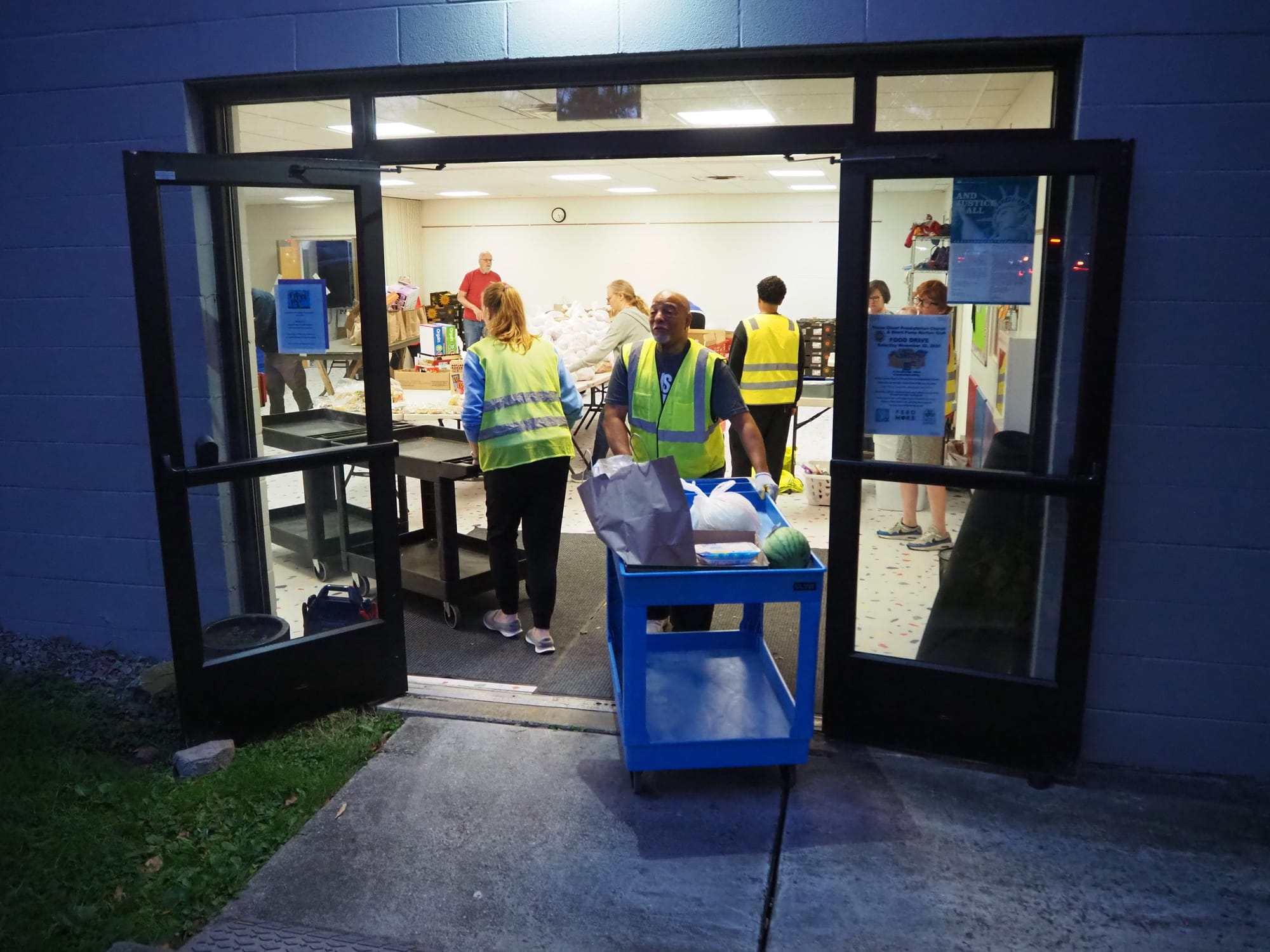


Volunteers at the Three Chopt Presbyterian Church distributed food to 282 households on a recent Tuesday evening. Cars typically line up in the parking lot of the church well before the 5 p.m. distribution start. Dozens of volunteers help prepare for hours before the distribution. "It's just unbelievable, the kindness and generosity," one longtime volunteer said. While many volunteers are members of the church, others are neighbors who saw the line of cars and wanted to help. Other volunteers are recipients. Neighbors who reside in Pinedale farms have helped by organizing a food drive. One organizer said: "The need is just devastating. It's very sad that in this very wealthy country we have this need. 99.9% of the people we see on the line work." (Dina Weinstein/Henrico Citizen)
SNAP whiplash timeline
Henrico County and Virginia state government officials responded to the severe need for food nutrition caused by the cessation of SNAP benefits.
In reaction to the news of the cuts to SNAP, Henrico County government officials sent out an email during a Wednesday distribution, on Oct. 22, advising SNAP recipients to visit a Feed More food pantry or visit 211virginia.org for assistance.
On Thursday, Oct. 23, Virginia Gov. Glenn Youngkin declared a state of emergency to provide crisis hunger relief by expending emergency funds for Virginians, establishing the Virginia Emergency Nutrition Assistance initiative. SNAP beneficiaries would receive these emergency funds on their Electronic Benefit Transfer cards distributed weekly starting on Nov. 3. As a part of VENA, food banks in the state also received an additional $1 million in funding due to the delays.
On Friday, Oct. 24, the U.S. Department of Agriculture announced that it would freeze SNAP benefits starting Nov. 1 due to a lapse in appropriations.

On Thursday, Oct. 30 Henrico County government donated $100,000 to support Feed More during SNAP cuts.
On Monday, Nov. 3, the Trump administration announced it would partially fund SNAP for November, after two judges issued rulings requiring the government to keep the nation’s largest food aid program running.
On Tuesday, Nov. 4, Virginia Gov. Glenn Youngkin launched the Virginia Cares initiative to help Virginians rally around each other through donating to food banks to help neighbors impacted by the federal government shutdown.
On Friday, Nov. 7, As the Heights Church Grocery lay prepared for the crowd of people that would line up for resources on Saturday morning, the Trump administration moved to deny swift and full food stamp payments, asking a federal appeals court to halt a judge's order the day before to pay them in full during the shutdown.
As these events unfolded, Virginians in the Henrico area struggled to understand what exactly was happening and when they were to receive support. Pantries and food banks continued issuing calls for help, with specific needs for food and monetary donations as well as volunteers.
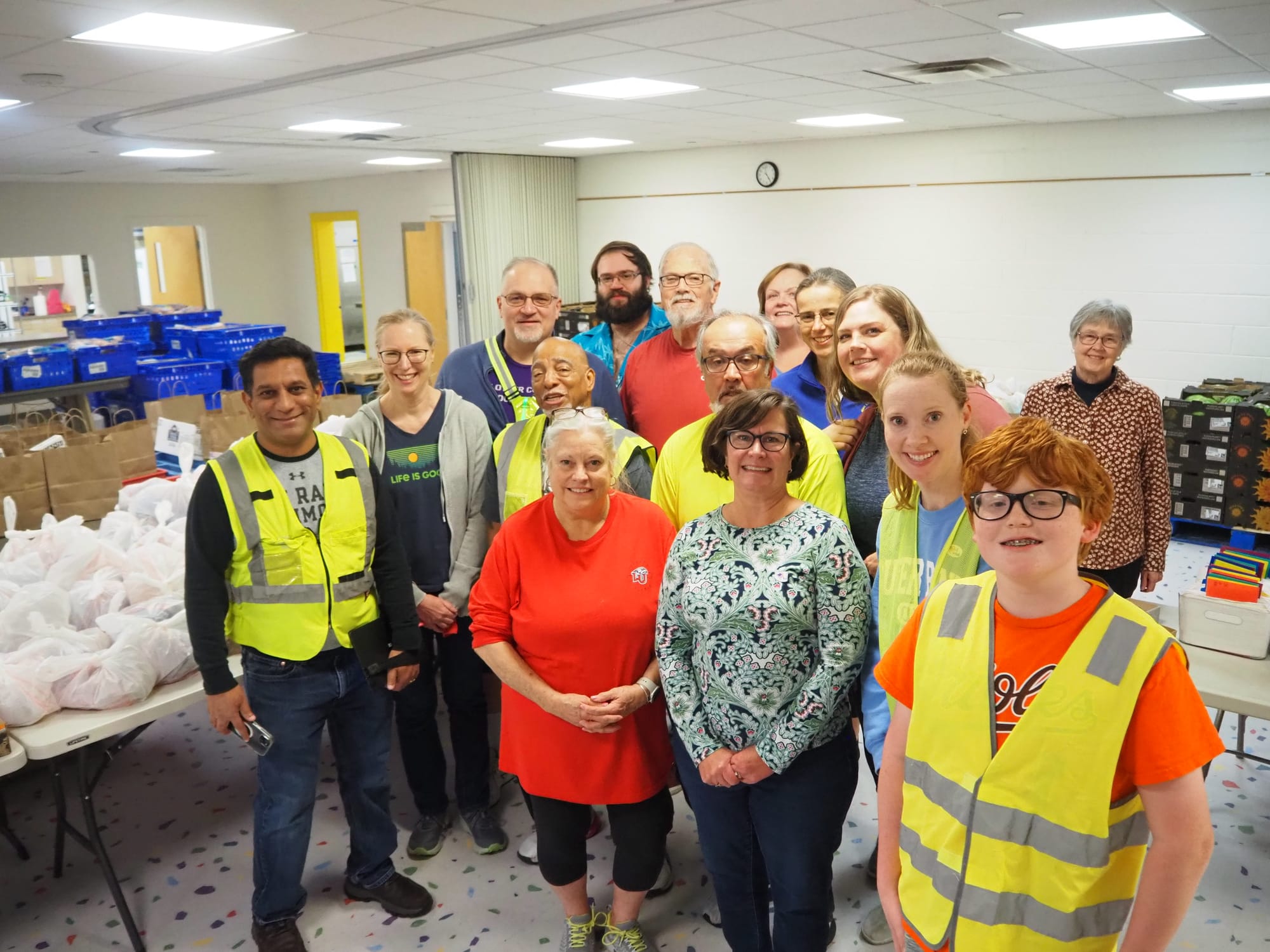
Dina Weinstein is the Citizen’s community vitality reporter and a Report for America corps member, covering housing, health and transportation. Support her work and articles like this one by making a contribution to the Citizen.


